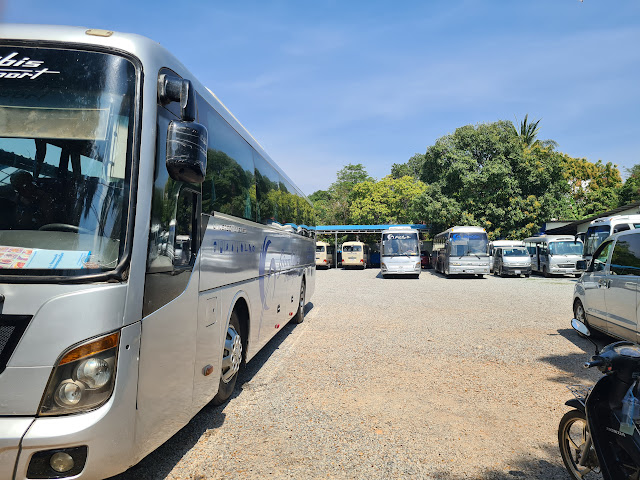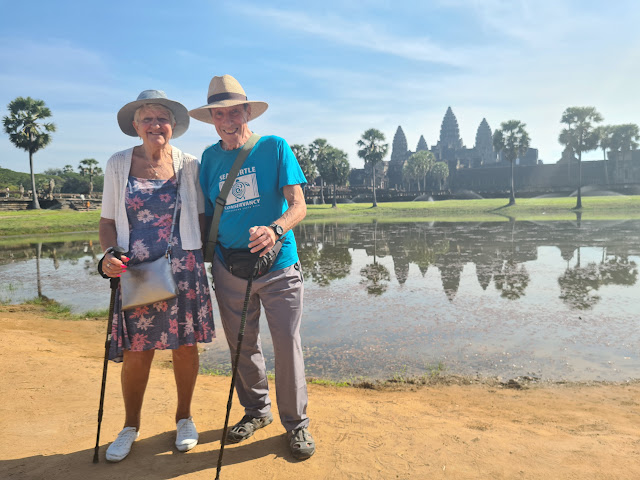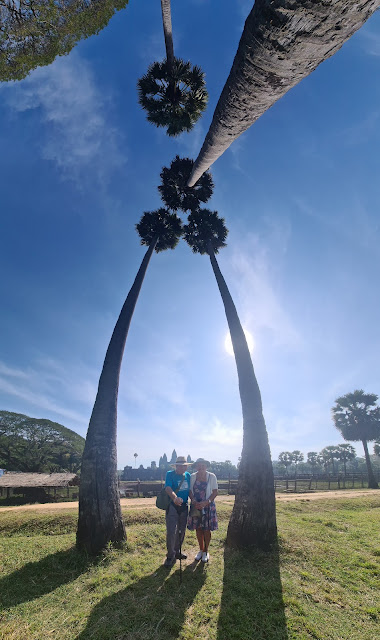I have visited several places where man's inhumanity to man is starkly demonstrated in horrific and very moving circumstances. The Holocaust extermination camp of Auschwitz-Birkenau, The Human Rights Museum in Santiago, Chile and the Hiroshima Memorial Museum are examples. Tuol Sleng or S21 was a torture and interrogation centre in Phnom Penh during the time the Khmer Rouge were ruling Cambodia from 1975 until 1979. This was one of 189 such centres presently known about.
Ironically these premises were formerly a High School which adds to the poignancy of its later usage. Firstly a word about the Khmer Rouge. They operated from 1951 until 1999 as the Communist Party of Kampuchea. Most of this time they were an insurgency but the Genocide took place when they were in power. Between 1,5 and 2 million people were slaughtered, about 25% of the population. They were extreme left wing, trying to create a purely agrarian society. Untrained in agriculture people forced out of the city couldn't survive. Famine was widespread. There was no use for intellectuals (anyone who wore glasses), they were all murdered as were all racial minorities.
Let's move on into the Museum. We had an audio guide so we learnt the whole story in every grizzly detail.
Block A, the main torture block. The leaders of the regime were paranoid about treachery consequently anyone could be tortured until they "confessed" then executed. S21 was reserved for the hierarchy of the regime. With the efficiency of Nazi Germany everything was documented including mug shots of the detainees. Much of documentary evidence is retained on the premises. Of all the people arrested and imprisoned here over 3 years only 12 survived (more on this later). In front of us you can see the graves of the last 14 people to die before the Vietnamese liberated the city. The total detained here was approaching 20,000.
The perimeter fence. See how close it is to the centre of the city, mind you the city was largely depopulated in1975.
The first of the torture rooms. Torture took many forms, application of electricity, water immersion including water boarding, beating with various instruments, insertion of dangerous insects in various orifices. I think that's enough. Prisoners were manacled and shackled to the bed. The ammunition box was the toilet facility. Spillages resulted in having to lick the floor clean.
A summary of the rules that were impossible to follow.
A second torture room. All block A consisted of these.
This was called the gallows. It wasn't where people were hanged, that would be too quick, rather people were hung by the wrists with their arms behind their backs. When they passed out, they were stuffed head first into the full water jars below. When this was a school it was a play area with climbing ropes attached to the beam.
Time for a break and a little peace and contemplation in the gardens.
Block B mainly contains the photographic records. You can see the inmates, the cadres who were the warders and torturers, and the leaders of the regime. The upper of the two pictures is of top leader Pol Pot. Incredibly Pol Pot died in his sleep in 1998 whist serving a life sentence imposed on him by his own Khmer Rouge. It wasn't until 2014 that 2 other leaders were tried by the UN for crimes against humanity.
Block C consists mainly small cells roughly built within what was originally a classroom. They were built so poorly that that jerry-built iron frameworks were needed to hold them up.
There were iron staples in the floor to which prisoners were shackled.
Difficult shot, this one. Victims of the regime. All these sculls have been forensically examined and all the deaths where the result of blows to the head by a blunt weapon. The victims then fell into a trench where their throats were cut, like you would a pig. This created mass graves and saved on the cost of ammunition.
Another tranquil garden with memorials. Some more thoughts on the insane and paranoid world of the Khmer Rouge. They were autocratic, totalitarian and repressive. Its insistence on absolute self-sufficiency, including the use of medicines led to the death of thousands from treatable diseases like malaria. For three years they banned money but salt, rice and gold were still used as currency.
I mentioned that there are believed to be only 12 survivors from amongst the inmates. This is one of them! He was a 14 year old boy when Phnom Penh and consequently the prison fell to the Vietnamese. His name is Nomg Chan Phal. You can see him with a copy of his book which he is about to present to Helen.



































































